This Date In Transactions History: Patriots WR N’Keal Harry Requests Trade
On this date in 2021, one of the more egregious public trade requests crossed the Twitter/X timeline. Former Patriots first-round wideout N’Keal Harry asked out of New England on July 6, 2021.
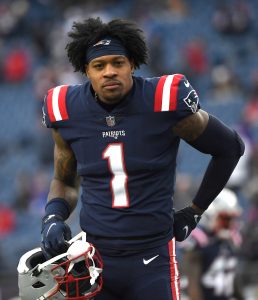 “For the past several months, I have been working in cooperation with the Patriots behind the scenes to put a plan in place to allow N’Keal to thrive in New England,” Harry’s agent, Jamal Tooson, wrote in a statement. “Through two seasons, he has 86 targets, which obviously hasn’t met the expectations the Patriots and N’Keal had when they drafted a dominant downfield threat who was virtually unstoppable at the point of attack in college. Following numerous conversations with the Patriots, I believe it’s time for a fresh start and best for both parties if N’Keal moves on before the start of training camp. That is why I have informed the Patriots today I am formally requesting a trade on behalf of my client.”
“For the past several months, I have been working in cooperation with the Patriots behind the scenes to put a plan in place to allow N’Keal to thrive in New England,” Harry’s agent, Jamal Tooson, wrote in a statement. “Through two seasons, he has 86 targets, which obviously hasn’t met the expectations the Patriots and N’Keal had when they drafted a dominant downfield threat who was virtually unstoppable at the point of attack in college. Following numerous conversations with the Patriots, I believe it’s time for a fresh start and best for both parties if N’Keal moves on before the start of training camp. That is why I have informed the Patriots today I am formally requesting a trade on behalf of my client.”
While the agent’s statement was filled with hyperbole, he wasn’t entirely wrong about Harry’s collegiate production. The Arizona State product earned a pair of first-team All-Pac-12 honors after compiling 175 catches, 2,305 yards from scrimmage, and 18 touchdowns between the 2017 and 2018 seasons. That two-year performance helped put him firmly on the NFL map, and he was ultimately the second wideout off the board during the 2019 draft (behind Marquise Brown and ahead of the likes of Deebo Samuel and A.J. Brown, who were the next two receivers taken).
The Patriots broke their tradition by selecting Harry with the No. 32 pick. Bill Belichick had never selected a first-round WR during his time in New England, and Harry was the organization’s first Round 1 receiver since Terry Glenn in 1996. So, it goes without saying that expectations were high for Harry.
Unfortunately for both the player and the organization, those expectations were never met. Tom Brady often looked off rookie wideouts during his illustrious career, and Harry wasn’t an exception. Despite the Patriots offense being without Rob Gronkowski (retirement) and Josh Gordon (injury), Harry only finished the 2019 campaign with 12 catches for 105 yards and two touchdowns. Things got a bit better with Cam Newton under center for the 2020 season, but Harry still struggled to match his first-round pedigree. The wideout finished his sophomore season with 33 catches for 309 yards, with both marks still representing career-highs.
With two underwhelming seasons under his belt, Harry and his camp decided he’d be best served to rehabilitate his career elsewhere. Unsurprisingly, there weren’t any teams willing to give up significant draft capital to acquire the wideout, leading to rumors that the Patriots could just outright cut the impending third-year player. Instead, Harry ended up sticking on the roster, although a shoulder injury kept him off the field for the first month of the season. When he returned, he once again struggled to make a connection with his quarterback, a position that was now manned by rookie Mac Jones. Harry finished the 2021 season with 12 catches for 184 yards.
Naturally, the Patriots declined Harry’s fifth-year option during the 2022 offseason, and the team eventually honored the player’s trade request. Harry was ultimately traded to the Bears for a seventh-round pick (a selection they eventually used on tight end Jaheim Bell). Harry didn’t do a whole lot during his cameo in Chicago, finishing with only seven catches. He spent most of the 2023 campaign in Minnesota, going catchless in 23 offensive snaps. After inking a reserve/futures contract with the Vikings this offseason, it was revealed that the six-foot-four, 225-pound athlete will be attempting to make Minnesota’s roster as a tight end in 2024.
When Harry’s camp made the trade request on this date three years ago, it was hinted that the player’s landing spot was to blame for the lack of production. Really, everyone involved deserves some responsibility for the disappointing results. The Patriots should have done a better job assuring that Harry would be a fit with Brady and the technical New England offense, especially after the organization had struck out on so many young WRs over the years. On the flip side, Harry was hoping to simply capitalize on his physical talents, a factor that his college coach, Herm Edwards, confirmed when he noted that rookies need “to have work ethic” and have “to focus in on football.”
As the Patriots undergo another significant offensive change in 2024, it’s hard not to imagine how things would look if Harry actually worked out in New England.
This Date In Transactions History: Raiders Sign Kerry Collins
As the Giants considered making a major quarterback move in this year’s draft, it is worth reminding the franchise has managed to avoid much turnover at the game’s premier position. The team employed Phil Simms for 15 years, Eli Manning for 16 and is set to give Daniel Jones a sixth season at the helm.
Kerry Collins stood in the Jones position 20 years ago, coming off his fifth season as the team’s starter. A former Panthers top-five pick, Collins had stabilized his career in New York, leading the Giants to Super Bowl XXXV and another playoff berth two years later. But the team had designs on upgrading after a 4-12 2003 season. Unlike this year’s Giants, the team completed a trade for its desired QB prospect. As Manning maneuvered his way to New York, being traded from the Chargers after the team he asked not pick him did so at No. 1 overall, Collins quickly made his way out of the Big Apple. Shortly after the draft, the Giants ended the suspense with their incumbent by cutting him.
One of only three primary Giants QB1s this century, Collins was given an option to stay on and groom Manning. Collins and then-GM Ernie Accorsi did not agree on an arrangement in which the veteran would accept a pay cut and be a bridge quarterback, so the Giants moved on in late April. Twenty years ago today, the Raiders came in with an offer that ended Collins’ short stay in free agency. The Raiders gave Collins a three-year, $16.82MM deal on May 24, 2004.
This mid-offseason agreement came as former MVP Rich Gannon‘s status was in question, and as the veteran Oakland starter approached 40, it would be Collins quarterbacking the Raiders for most of the next two seasons. Gannon had made the Pro Bowl in each of his first four Raiders seasons. This included a 2002 MVP award, when he piloted the Raiders to Super Bowl XXXVII, and two first-team All-Pro honors. But his 2003 season ended early due to a torn labrum. As Gannon entered his age-39 season, Collins — at 31 — became a high-profile insurance option.
Oakland needed to use that insurance early. A scary helmet-to-helmet collision with future Hall of Famer Derrick Brooks in Week 3 of the 2004 season ended Gannon’s career. Collins started the final 13 games for the Raiders in 2004 and was under center in 15 games during the ’05 season. The pocket passer’s Raiders tenure did not reach the heights his Giants run did.
Collins played with arguably the two best wide receivers in NFL history, though not at the same time. Jerry Rice‘s four-year Raiders tenure ended (via a trade to the Seahawks) in October 2004, and Randy Moss‘ two-season Oakland stay began after a Raiders-Vikings swap in 2005. While Moss fared better with Collins (1,005 receiving yards) than he did during a woeful 2006 season, the all-time great’s Raiders stretch was a major disappointment.
The Raiders went 7-21 with Collins at the controls. The veteran led the NFL in interceptions, with 20, in 2004 and completed just 53.5% of his passes — well south of his Giants work — in 2005. Firing Norv Turner after the 2005 season, the Raiders also cut Collins. They signed Aaron Brooks in 2006, using he and 2005 third-rounder Andrew Walter as stopgaps during a 2-14 season that set up the JaMarcus Russell pick.
Eventually stretching his career to 17 seasons, Collins ended up bouncing back with the Titans. The 2006 free agency pickup replaced a scuffling Vince Young in 2008 and led Tennessee team to a 13-3 record. After Collins passed on the Manning bridge gig four years earlier, Kurt Warner ended up taking it. Although the former two-time MVP was benched for a developing Manning nine games into the 2004 season, the Giants tenure helped set up the future Hall of Famer’s memorable third act with the Cardinals.
This Date In Transactions History: Ryan Tannehill, Dolphins Agree To Extension
The Dolphins are currently navigating a quarterback extension, as the front office is working with Tua Tagovailoa on a lucrative second contract. Almost a decade ago, the team found themselves in a very similar situation.
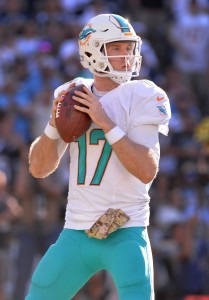 On this date in 2015, the Dolphins signed quarterback Ryan Tannehill to an extension. The six-year, $96MM extension included $45MM guaranteed, and it was intended to cover the last year of the quarterback’s rookie deal, the fifth-year option season, and four additional free agent years.
On this date in 2015, the Dolphins signed quarterback Ryan Tannehill to an extension. The six-year, $96MM extension included $45MM guaranteed, and it was intended to cover the last year of the quarterback’s rookie deal, the fifth-year option season, and four additional free agent years.
At the time, it was hard to be overly critical of Miami’s long-term commitment to the former first-round pick. Tannehill topped 3,000 passing yards in each of his first three seasons in the NFL, and he improved on his touchdown totals in each of his campaigns (culminating in a 2014 season where he tossed 27 scores). While the Dolphins had yet to break through with a postseason run, the team’s worst showing through Tannehill’s first three seasons was a 7-9 mark during his rookie campaign.
There was some urgency on the Dolphins’ part to complete a deal. Tannehill was one of four QBs from the 2012 draft class (along with Andrew Luck, Robert Griffin III, and Russell Wilson) to be eyeing lucrative extensions, and Miami assured they wouldn’t be boxed into a corner by completing the first deal from that group. Luck ended up getting $140MM from the Colts while Wilson got around $88MM on a four-year deal with the Seahawks (Griffin never got a second contract from Washington). When compared to his draftmates, Tannehill’s average annual value didn’t break the bank.
Of course, the move didn’t come without risk. This was the first major move by Mike Tannenbaum, the Dolphins’ new executive vice president of football operations. It was Tannenbaum’s decision to hand Mark Sanchez a sizable extension in New York that ultimately led to the executive’s ouster. Tannenbaum wasn’t looking to make the same mistake twice.
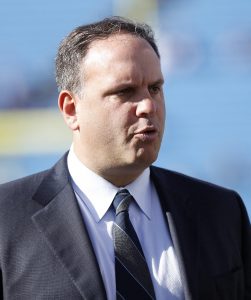 “We are thrilled that we were able to sign Ryan to an extension,” Tannenbaum said at the time (via the Miami Herald). “He is an ascending talent, a team leader and checks all of the boxes you are looking for at the position.”
“We are thrilled that we were able to sign Ryan to an extension,” Tannenbaum said at the time (via the Miami Herald). “He is an ascending talent, a team leader and checks all of the boxes you are looking for at the position.”
While the Dolphins dropped to 6-10 during Tannehill’s first year playing on the extension, the QB continued to validate the organization’s decision. The fourth-year player tossed a career-high 4,045 passing yards that season, making him the fourth QB in NFL history to top 3,000 passing yards in each of his first four seasons. The Dolphins took a step forward during Tannehill’s fifth season at the helm, with the team finally earning a playoff nod. However, after going 8-5 through the first 13 games, Tannehill suffered a season-ending knee injury that knocked him out for the postseason.
That injury ended up greatly altering Tannehill’s ability to finish his contract with Miami. The quarterback opted for rehab over surgery to his injured ACL, allowing him to be on the field for the start of 2017 training camp. However, he suffered another injury during the first day of 11-on-11 drills, and he eventually went under the knife to repair the torn ACL.
That following offseason, the Dolphins faced a major cap crunch. While Tannenbaum could have moved on from Tannehill (via release or trade) without any financial penalty, the executive instead reworked the player’s contract. That move temporarily opened up some breathing room under the cap, but it also kicked some sizable guaranteed money down the road. That decision ended up greatly reducing the organization’s return for the QB a year later.
Tannehill returned in time for the 2018 campaign but was forced to miss a chunk of games due to a shoulder injury. After the Dolphins were forced to rely on their QB2 for three-straight seasons, the team finally decided to cut bait on their franchise signal caller. During the 2019 offseason, the Dolphins traded Tannehill to the Titans for draft compensation. The QB agreed to rip up his contract with Tennessee, locking him into a one-year prove-it deal for the 2019 campaign.
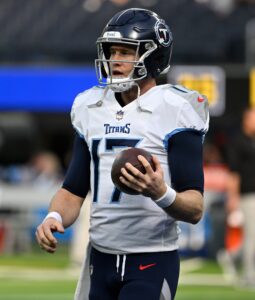 Tannehill bounced back in a big way that season, earning his first career Pro Bowl nod while guiding the Titans to a 7-3 regular season record and a pair of postseason victories. That performance earned him a new contract from the Titans, a four-year, $118MM pact. Tannehill continued to guide a playoff squad in Tennessee for the 2020 and 2021 seasons, but he had an inconsistent role in 2022 and 2023 following the additions of Malik Willis and Will Levis. The 35-year-old is currently a free agent.
Tannehill bounced back in a big way that season, earning his first career Pro Bowl nod while guiding the Titans to a 7-3 regular season record and a pair of postseason victories. That performance earned him a new contract from the Titans, a four-year, $118MM pact. Tannehill continued to guide a playoff squad in Tennessee for the 2020 and 2021 seasons, but he had an inconsistent role in 2022 and 2023 following the additions of Malik Willis and Will Levis. The 35-year-old is currently a free agent.
Nine years after signing the extension, things couldn’t have worked out much better for Tannehill. Of course, that doesn’t mean the quarterback didn’t take a handful of risks. For starters, much of his future guaranteed money was only due if Tannehill played, meaning he could have been cut at any time without any penalty (an advantage that the Dolphins squandered following that aforementioned restructuring). Tannehill also could have played hard ball with the Titans with the hope of getting cut, but he ultimately fave up some significant future money as he looked to rehabilitate his image. That gamble immediately worked out for the QB, as the Titans signed him to his third contract.
While the Dolphins never reached the success they were surely envisioning when they extended Tannehill, the team at least waved the white flag at the right time. Following a bridge season with Ryan Fitzpatrick under center, the team quickly found their future answer at QB in Tagovailoa. Of course, that glass-half-full perspective wasn’t enough to save Tannenbaum’s job. The executive was reassigned from his role in 2018, and while it was the Dolphins’ entire body of work that led to his demotion/firing, the Tannehill restructuring in 2018 certainly didn’t help.
As the Dolphins look to sign Tagovailoa to a second contract, the top decision makers will surely proceed with caution after seeing how things unfolded with their last major QB investment.
This Date In Transactions History: Dez Bryant, Demaryius Thomas Sign Extensions
With the deadline looming for extension-eligible players, two of the league’s top wideouts signed lucrative extensions with their organizations on this day eight years ago. On July 15, 2015, Cowboys wide receiver Dez Bryant and Broncos wide receiver Demaryius Thomas signed new deals with their squads.
 The two 2010 first-round WRs were slapped with the franchise tag before they could hit unrestricted free agency, and negotiations with their respective teams hadn’t necessarily gone smoothly. In fact, the NFL Players Association threatened to file a collusion complaint against the Cowboys and Broncos over the lack of extension progress, and both Bryant and Thomas began teased holdouts as the July 15 deadline approached.
The two 2010 first-round WRs were slapped with the franchise tag before they could hit unrestricted free agency, and negotiations with their respective teams hadn’t necessarily gone smoothly. In fact, the NFL Players Association threatened to file a collusion complaint against the Cowboys and Broncos over the lack of extension progress, and both Bryant and Thomas began teased holdouts as the July 15 deadline approached.
Ultimately, both players ended up getting their desired pacts from their new squads, with the duo seeking deals that approached Calvin Johnson‘s $16.21MM average annual salary. Bryant and Thomas ultimately signed similar five-year, $70MM deals; the two players were previously attached to franchise tags worth $12.8MM.
At that point of his career, Bryant had established himself as one of the league’s elite wideouts. At the time of his signing, Bryant hadn’t missed a game in three seasons, and he was coming off his third-straight campaign with at least 88 catches and 12 touchdowns. He took it to another level during his contract year, hauling in a career-high 16 touchdowns while tying a career-best 15.0 yards-per-catch mark.
Unfortunately for the receiver and the Cowboys, that 2014 campaign that preceded his extension was the last time Bryant would earn an All-Pro selection in his career. His 2015 season was limited to only eight games while he dealt with a lingering foot injury, although he did return to Pro Bowl status in 2016 after finishing with 50 catches and eight touchdowns in 13 games. Bryant managed to revert to his durable self during the 2017 season, appearing in all 16 games. However, his 12.1 yards-per-reception mark set a new career-low, and with two years remaining on his deal, the Cowboys moved on from the wideout.
Bryant joined the Saints for the 2018 season, but he ended up missing the year thanks to a torn Achilles. He sat out the 2019 season while seeking a new job before catching on with the Ravens in 2020. He caught six passes in six games for Baltimore, and he hasn’t earned an NFL contract since that gig.
 The Broncos got a bit more production out of their extension with Thomas. Prior to signing his new deal, the receiver was coming off a three-year stretch where he averaged 99 receptions, 1,494 receiving yards, and close to 12 touchdowns per season (he added another five scores in five playoff games). While Thomas would never hit those numbers again, his first season under his new deal was still plenty productive. The wideout finished the year with 1,304 receiving yards and six touchdowns before earning his lone Super Bowl championship.
The Broncos got a bit more production out of their extension with Thomas. Prior to signing his new deal, the receiver was coming off a three-year stretch where he averaged 99 receptions, 1,494 receiving yards, and close to 12 touchdowns per season (he added another five scores in five playoff games). While Thomas would never hit those numbers again, his first season under his new deal was still plenty productive. The wideout finished the year with 1,304 receiving yards and six touchdowns before earning his lone Super Bowl championship.
Thomas would only have one more 1,000-yard season after 2015. Despite losing Peyton Manning under center for the 2016 season, the receiver still earned a Pro Bowl nod after compiling 1,083 yards. Inconsistent QB play led to Thomas finishing with only 949 receiving yards in 2017, and with the Broncos eyeing a rebuild in 2018, Thomas was traded to the Texans. Following a brief stint with the Patriots during the 2019 preseason, Thomas caught on with the Jets, hauling in 36 receptions in 11 games. After not playing during the 2020 season, Thomas announced his retirement.
Teams are naturally cautious when it comes to handing out big-money extensions. You can’t blame the Cowboys nor the Broncos for extending their star wideouts, but it also shouldn’t have come as a huge surprise that neither player ended up completing their deals with their respective teams.
This Date In Transactions History: Broncos Extend LT Ryan Clady
Mid-July annually features extension talks ramping up, particularly for a small group of players. With the deadline for franchise-tagged players to sign extensions looming July 15 in most years (or around that date if July 15 falls on a weekend, as it does this year), dozens of extensions in the tag era (1993-present) have been completed around this point.
One of them came 10 years ago today. On July 14, 2013, the Broncos and cornerstone left tackle Ryan Clady agreed to terms on a five-year deal worth $52.5MM. The Broncos had tagged Clady earlier that year, keeping Peyton Manning‘s blindside protector off the market for $9.83MM. Illustrating where the salary cap has taken tag values, it would have cost a team $18.24MM to tag an offensive lineman this year.
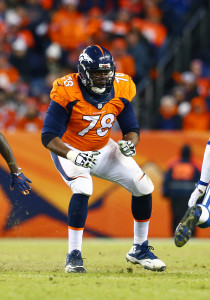 Clady’s peak reached as high as just about any offensive lineman in Broncos history. Only he and stalwart center Tom Nalen earned two first-team All-Pro nods as Broncos. Denver used its 2008 first-round pick on Clady, who excelled at Boise State, and immediately plugged him in as Jay Cutler‘s blindside protector. (Clady earned second-team All-Pro honors as a rookie and finished third in that year’s Offensive Rookie of the Year voting.)
Clady’s peak reached as high as just about any offensive lineman in Broncos history. Only he and stalwart center Tom Nalen earned two first-team All-Pro nods as Broncos. Denver used its 2008 first-round pick on Clady, who excelled at Boise State, and immediately plugged him in as Jay Cutler‘s blindside protector. (Clady earned second-team All-Pro honors as a rookie and finished third in that year’s Offensive Rookie of the Year voting.)
The franchise abruptly changed course at quarterback upon hiring Josh McDaniels as head coach a year later, leading to the team trading Cutler to the Bears. But Clady earned first-team All-Pro acclaim for his work as Kyle Orton‘s left tackle. Clady suffered a patellar tendon tear suffered while playing basketball during the 2010 offseason, moving him off the Pro Bowl level in 2010, but he rebounded to help the Broncos make a surprise playoff run after changing their offense to suit Tim Tebow‘s skillset the following year.
After returning to the Pro Bowl level in 2011, Clady notched his second All-Pro honor during Manning’s first season in Colorado. With Manning signed to a five-year, $96MM deal, the Broncos made sure to keep his top O-lineman off the market via the tag. Negotiations ramped up just before the tag deadline, and the sides reached an agreement on a deal that made Clady the third-highest-paid tackle — behind Jason Peters and Joe Thomas — at the time.
Denver’s deal came with $33MM guaranteed, and two more All-Pro selections would have bumped the value to $57.5MM. While the contract gave the talented blocker security, injuries soon caught up with Clady. After Clady suffered a shoulder malady late in the 2012 season, he sustained a season-ending Lisfranc injury in Week 2 of the 2013 season. Although Clady came back in 2014 and collected his fourth Pro Bowl honor, he suffered an ACL tear in May 2015. Clady collected a Super Bowl ring as a member of that Broncos team, but he did not play a down that season.
The Broncos, who had plugged in Chris Clark as their LT replacement during their Super Bowl XLVIII-qualifying season, primarily used Ryan Harris as their left tackle during their Super Bowl-winning year two seasons later. The team traded Clady to the Jets in April 2016. After Clady — the Jets’ D’Brickashaw Ferguson successor — wound up on IR in November 2016, he opted to retire during the 2017 offseason. The Broncos used Russell Okung as a one-year stopgap in 2016 before drafting Garett Bolles in the 2017 first round. Bolles is currently tied to a four-year, $68MM extension.
This Date In Transactions History: Michael Irvin Retires
Following a scary sight in Philadelphia during the 1999 season, Michael Irvin opted not to risk his health by attempting to return from a severe injury. The superstar Cowboys wide receiver instead called it quits during the 2000 offseason.
A central component in the Cowboys’ 1990s dynasty, Irvin was in his 12th NFL season when he suffered a spine injury at Veterans Stadium in October 1999. Cervical spinal stenosis became Irvin’s official diagnosis. Irvin, 34 at the time of his retirement, was temporarily paralyzed after hauling in a short pass from Troy Aikman. During the 2000 offseason, doctors had advised Irvin to walk away due to the risk a return posed.
 “I like to think of myself as a warrior. I wanted to be dragged off the field, and I was,” Irvin said at the time. “… If I said there wasn’t serious thought [of coming back], I’d be lying to you. I tried to rationalize it: ‘Any hit can be your last hit. You’ve been doing that all you’re life.’ But I’ve accomplished a great deal of things that I wanted to accomplish and at this juncture there’s no need to risk it and go on.”
“I like to think of myself as a warrior. I wanted to be dragged off the field, and I was,” Irvin said at the time. “… If I said there wasn’t serious thought [of coming back], I’d be lying to you. I tried to rationalize it: ‘Any hit can be your last hit. You’ve been doing that all you’re life.’ But I’ve accomplished a great deal of things that I wanted to accomplish and at this juncture there’s no need to risk it and go on.”
The decision brought an end to one of the best careers in Cowboys history. The first of Dallas’ famed “Triplets” to debut in the pros — a year before Aikman and two years before Emmitt Smith — Irvin joined the Cowboys after a much-discussed career at the University of Miami. In Tom Landry‘s final year as Cowboys head coach (1988), the team used its No. 11 overall pick on Irvin, who was reunited with his college HC — Jimmy Johnson — a year later. Irvin went on to become one of his era’s best wide receivers.
When Irvin was stretchered off the turf in Philly 24 years ago, his reception and receiving yardage totals (750 and 11,904) each ranked ninth in NFL history. Illustrating the pass-crazed nature of today’s game, those numbers have dropped to 44th and 29th, respectively. But Irvin earned a spot on the 1990s’ All-Decade team. His retirement also came five years after another of Jerry Rice‘s top contemporaries, Sterling Sharpe, left the game early due to a neck injury.
After leading the NFL in receiving during a breakout 1991 season — the Cowboys’ first playoff berth of the Johnson era — Irvin staged a holdout with the goal of becoming the league’s second-highest-paid receiver (behind Rice). A three-year, $3.75MM contract kept Irvin in uniform ahead of the 1992 season, a rather important year in Cowboys history. Dallas won the first of its three Super Bowls that season; the 6-foot-2 wideout caught two touchdown passes in the team’s 52-17 win over the Bills. Irvin made the Pro Bowl each year from 1991-95, with the final two seasons coming after the infamous Johnson-Jerry Jones split. The Cowboys gave their top aerial threat a raise (five years, $15MM) during the ’95 offseason. At the time, that contract was the richest in wide receiver history.
A drug arrest led to Irvin being suspended for the first five games of the 1996 season; the rangy receiver still led the NFL with 87.5 yards per game upon return. “The Playmaker” tacked on two more 1,000-yard years in his final two full seasons, en route to Hall of Fame induction in 2007.
This Date In Transactions History: Raiders In Contract Dispute With Rookie RB
Josh Jacobs and the Raiders are currently engaged in a stare down regarding the running back’s next contract. Interesting, this isn’t the first time Jacobs and his camp have been embroiled in a contract dispute with the organization.
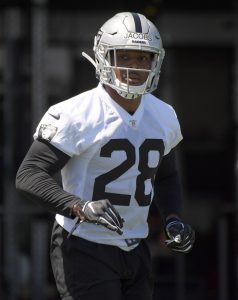 [RELATED: Raiders’ Josh Jacobs Could Sit Out Week 1?]
[RELATED: Raiders’ Josh Jacobs Could Sit Out Week 1?]
On this date in 2019, we learned that negotiations weren’t progressing between the Raiders and their rookie running back. In fact, things were so bad, there was growing belief that Jacobs would not report for the start of training camp.
This kind of threat was almost unheard of following the 2011 collective bargaining agreement, with rookie contracts and signing bonuses being mostly predetermined. So, while Jacobs was the team’s only unsigned draft pick at this point of the offseason, it was assumed that negotiations weren’t contentious and would be finalized eventually.
While some first-year players pushed for changes to the offset language in their rookie contracts, Jacobs was actually looking for changes to the payment schedule of his signing bonus. As our own Rory Parks pointed out at the time, teams don’t have to pay the full amount of a bonus upfront and can instead pay in installments. If the player suffers a non-football injury, the team can then withhold or even recover part of that signing bonus. While the running back surely wasn’t counting on an NFI stint, it made sense that he was looking to cash in as soon as possible.
Ultimately, Jacobs ended up signing his four-year, $11.9MM contract (not including a fifth-year option). The signing came three weeks after the organization inked their other two first-round picks, Clelin Ferrell and Johnathan Abram.
The rookie quickly showed off his first-round pedigree, finishing second in Offensive Rookie of the Year voting after finishing with 1,316 yards from scrimmage and seven touchdowns. He topped 1,300 yards again in 2020, this time adding 12 touchdowns.
His counting stats took a step back in 2021, and with a new regime at the helm, the Raiders didn’t pick up Jacobs’ fifth-year options. As an impending free agent, the running back proceeded to have the most productive season of his career in 2022, finishing with 2,053 yards from scrimmage and 12 touchdowns. The Raiders slapped Jacobs with the franchise tag following the season.
Despite the production, the Raiders and Jacobs still haven’t been able to agree on a long-term extension, with the two sides having until July 17 to negotiate a new contract. Throughout the ordeal, Jacobs has talked of taking a stance for future running backs, and he’s also hinted at “bad business” coming from the Raiders organization.
Even with the looming deadline, Jacobs is still threatening to sit out games in 2023 if he’s not signed to an extension. In that scenario, Jacobs still wouldn’t get his wish of a new deal, and he’d be sacrificing game checks once the regular season starts. Still, you clearly can’t put it past the running back to hold out, even if there’s little financial incentive when all is said and done. We can just point to the RB’s contract dispute with the organization back in 2019, and while Dave Ziegler has since replaced Mike Mayock as the Raiders GM, the front office is surely aware of who they’re dealing with.
This Date In Transactions History: Chiefs Fire John Dorsey, Extend Andy Reid
On the same day the Chiefs committed to their head coach, they let go of their general manager. On June 22, 2017, the Chiefs extended head coach Andy Reid before firing general manager John Dorsey.
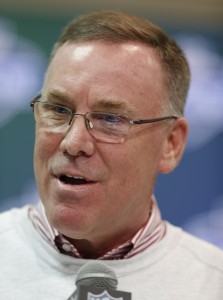 The Chiefs brought in both Reid and Dorsey during the 2013 offseason, reuniting the two after they previously worked alongside each other in Green Bay. The duo was simply looking to return Kansas City to the postseason for just the second time in seven years, and they succeeded right away, with the Chiefs going 11-5 during the 2013 campaign.
The Chiefs brought in both Reid and Dorsey during the 2013 offseason, reuniting the two after they previously worked alongside each other in Green Bay. The duo was simply looking to return Kansas City to the postseason for just the second time in seven years, and they succeeded right away, with the Chiefs going 11-5 during the 2013 campaign.
The team was consistent over the following three seasons, earning two more playoff appearances while averaging more than 10 wins per season. It appeared it was going to be status quo for the 2017 campaign, although this time, Dorsey and the Chiefs showed a willingness to consider a post-Alex Smith era when they traded up for Patrick Mahomes at the 10th-overall pick. The Chiefs made a few more significant moves (including signing Eric Berry to a hefty extension) before they made the sudden decision to move off of their GM.
“I notified John that we would not be extending his contract beyond the 2017 season, and after consideration, we felt it was in his best interests and the best interests of the team to part ways now,” CEO Clark Hunt said at the time. “This decision, while a difficult one, allows John to pursue other opportunities as we continue our preparations for the upcoming season and the seasons to come. My family and I sincerely appreciate John’s work over the last four-and-a-half years, and we wish him nothing but the best in the future.”
This was an especially surprising development considering the organization announced that they had extended Reid earlier that day.
“My family and I have been very pleased by the success the franchise has sustained over the last four seasons under Coach Reid,” Hunt said. “He has already established himself as one of the best coaches in the league, and he is well on his way to solidifying a place among the all-time greats. We are proud to have him leading our football team, and I look forward to working with him to bring a championship to Chiefs Kingdom.”
 It was never made clear why Reid was afforded a longer leash than Dorsey, but following the firing, we learned that the GM didn’t have many fans thanks to his management style and salary cap mismanagement. His cap issues ultimately led to the ouster of several fan favorites, including Jamaal Charles and Derrick Johnson.
It was never made clear why Reid was afforded a longer leash than Dorsey, but following the firing, we learned that the GM didn’t have many fans thanks to his management style and salary cap mismanagement. His cap issues ultimately led to the ouster of several fan favorites, including Jamaal Charles and Derrick Johnson.
Six years later, we can confidently say the Chiefs were right to commit to their head coach. The team eventually took off with Mahomes under center, and the organization has since won two of their three Super Bowl appearances. Reid earned another extension with the organization in 2020.
Things are a bit more complicated when it comes to Dorsey. Brett Veach has guided the Chiefs to two championships as general manager, but Dorsey has earned some praise for his contributions to the eventual Super Bowl champs (especially his selection of Mahomes). Of course, those Super Bowls don’t show up on the executive’s resume; what does show up is his underwhelming two-year stint in Cleveland. He joined the Browns less than a year after his Kansas City firing, and despite having some key draft selections (including the first-overall pick) and some major veteran acquisitions (including Odell Beckham Jr.), Cleveland only went 13-18-1 with Dorsey at the helm.
Thanks to the value of hindsight, we know that the Chiefs undoubtedly made the correct decision on this day six years ago. However, it’s fair to wonder if retaining Dorsey would have drastically altered this team’s future Super Bowl chances.
This Date In Transactions History: Patriots Sign Tim Tebow
Bill Belichick has certainly earned the benefit of the doubt when it comes to roster machinations, but he raised a few eyebrows when he made a surprise signing on this date in 2013. On the eve of mandatory minicamp that year, Tebowmania made its way to Foxborough when the Patriots signed quarterback Tim Tebow.
 At that point of his career, Tebow wasn’t far removed from his standout 2011 campaign. That year, Tebow went 7-4 in his 11 starts with the Broncos, and he even helped guide Denver to a playoff win. Of course, there were still plenty of pundits who questioned if Tebow could actually succeed as a starting NFL quarterback. Despite the solid record as a starter, Tebow only completed 46.5 percent of his passes that season, but he predictably showed much more promise on the ground, where he ran for 660 yards and six scores.
At that point of his career, Tebow wasn’t far removed from his standout 2011 campaign. That year, Tebow went 7-4 in his 11 starts with the Broncos, and he even helped guide Denver to a playoff win. Of course, there were still plenty of pundits who questioned if Tebow could actually succeed as a starting NFL quarterback. Despite the solid record as a starter, Tebow only completed 46.5 percent of his passes that season, but he predictably showed much more promise on the ground, where he ran for 660 yards and six scores.
The Broncos decided to go all-in for the 2012 campaign, adding Peyton Manning to the mix. Tebow was ultimately shipped off to the Jets, where he started two games while mostly serving as a backup and wildcat alternative to Mark Sanchez. Tebow was cut by New York the following April.
The market wasn’t all that hot for Tebow, leading to him remaining unsigned for a couple of months. Then, the Patriots made the sudden signing on June 10, 2013. While the transaction certainly took many by surprise, it made some sense. For starters, the move reunited the QB with Josh McDaniels, who Tebow had his most NFL success under when the two were in Denver.
Secondly, there wouldn’t be any pressure for Tebow to play a major role in New England; he was never going to supplant Tom Brady, and most reporters opined that he would likely slide in third on the depth chart behind Ryan Mallett. The Patriots have been known to get creative with some of their personnel, so beyond serving as a back-of-the-depth-chart, wildcard option, there was some hope that the organization would try him out at some skill positions.
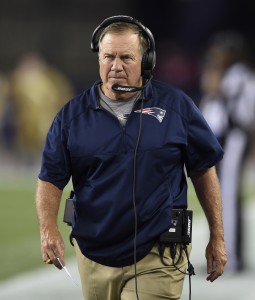 Finally, the stingy Patriots didn’t need to make any financial commitment to Tebow, which perhaps played a role in them tolerating the media circus that accompanied. While Tebow technically inked a two-year contract with the organization, it contained no guaranteed money and was mostly based on playing-time incentives.
Finally, the stingy Patriots didn’t need to make any financial commitment to Tebow, which perhaps played a role in them tolerating the media circus that accompanied. While Tebow technically inked a two-year contract with the organization, it contained no guaranteed money and was mostly based on playing-time incentives.
Tebow’s stint in New England didn’t end up lasting all that long. He got into a pair of preseason games for the Patriots, with his 36.7 percent completion rate ranking last among all qualifying players. He was picked off twice and sacked a number of times, although he did manage to shake loose for 91 rushing yards on 16 attempts.
“It’s not just one game [that matters],” Belichick said following Tebow’s underwhelming preseason finale (via ESPN), “although every game is important. But the body of work, the camp, the rate of improvement, the ability to do the things that players are going to be asked to do at their respective positions [also matters].”
Whatever Tebow was showing Belichick off the field, it wasn’t enough to keep his job. Tebow was among the Patriots’ final cuts during the preseason, with the QB tweeting that he would “remain in relentless pursuit of continuing [his] lifelong dream of being an NFL quarterback.”
The Patriots rolled forward with only two QBs on the roster for the 2013 campaign, and Brady ended up taking every snap at the position that season. While the Tebow signing is ultimately just a footnote in the story of the Brady/Belichick Patriots, the signing may have given us a clue that the organization was considering future options at QB outside of Mallett, a former third-round pick. Indeed, during the 2014 NFL Draft, the Patriots ended up selecting Jimmy Garoppolo in the second round.
As for Tebow, the signal-caller would get a few more NFL opportunities before all was said and done. He spent the 2015 preseason with the Eagles, and during the 2021 preseason, he caught on with Urban Meyer as a tight end in Jacksonville. Still, he hasn’t seen the field since 2012.
This Date In Transactions History: Browns Extend TE David Njoku
It can always be a bit risky paying big money on tight ends, especially when the player hasn’t even shown Pro Bowl-worthy production. So, when the Browns signed David Njoku to an extension on this day in 2022, it certainly raised a few eyebrows. Fortunately for the Browns, they shouldn’t have any regrets with exactly one year to reflect on the move.
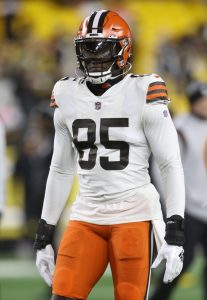 On May 27, 2022, the Browns announced that they inked their former first-round tight end to an extension. Njoku had already been slapped with the franchise tag, ensuring at least a hefty payday for the 2022 campaign. Instead, the organization ripped up that tender and signed Njoku to a four-year, $56.75MM deal with $28MM in guaranteed money. The extension put the player fifth at the position in terms of average annual value, and while he’s since been passed by Darren Waller‘s record-breaking deal, Njoku still represents one of the largest tight end contracts in the NFL.
On May 27, 2022, the Browns announced that they inked their former first-round tight end to an extension. Njoku had already been slapped with the franchise tag, ensuring at least a hefty payday for the 2022 campaign. Instead, the organization ripped up that tender and signed Njoku to a four-year, $56.75MM deal with $28MM in guaranteed money. The extension put the player fifth at the position in terms of average annual value, and while he’s since been passed by Darren Waller‘s record-breaking deal, Njoku still represents one of the largest tight end contracts in the NFL.
Njoku had an inconsistent role during his rookie season but showed his potential during the 2018 campaign, finishing with 56 receptions for 639 yards and four touchdowns. The next two years didn’t go all that great for the tight end; his 2019 season was limited to only four games while he recovered from a broken wrist, and he started only five of his 13 appearances in 2020 while dealing with a knee injury.
He rebounded a bit in 2021, finishing with 36 catches for 475 yards and four touchdowns. While that production probably doesn’t warrant a $50MM+ contract, a pair of moves made it appear that Njoku was on the brink of a breakout season, perhaps justifying the organization’s investment. For starters, the Browns moved on from Austin Hooper, a transaction that finally made Njoku the undisputed starter. Second, the front office made the franchise-altering trade for Deshaun Watson, and considering Cleveland’s lack of experienced receiving options, Njoku would surely become one of the QB’s preferred targets.
Watson, of course, was limited to only six games while serving a suspension, but Njoku still managed to put together one of his most productive seasons since that aforementioned sophomore campaign. The 26-year-old ultimately finished his 2022 season having hauled in 58 catches for 628 yards and four touchdowns. Sure, those numbers are still a far cry from the numbers put up by the other highest-paid tight ends (a grouping that includes Travis Kelce, Mark Andrews, Dallas Goedert, George Kittle, and Waller). However, considering Njoku’s age and modest production, it makes sense that he’d be right below that grouping and above the likes of Dawson Knox, Jonnu Smith, Hunter Henry, Evan Engram, and Zach Ertz.
The Browns will surely be hoping for even more for Njoku in 2023. If the tight end is able to put together a career year during his seventh season in the NFL, his extension may end up looking like a bargain.
